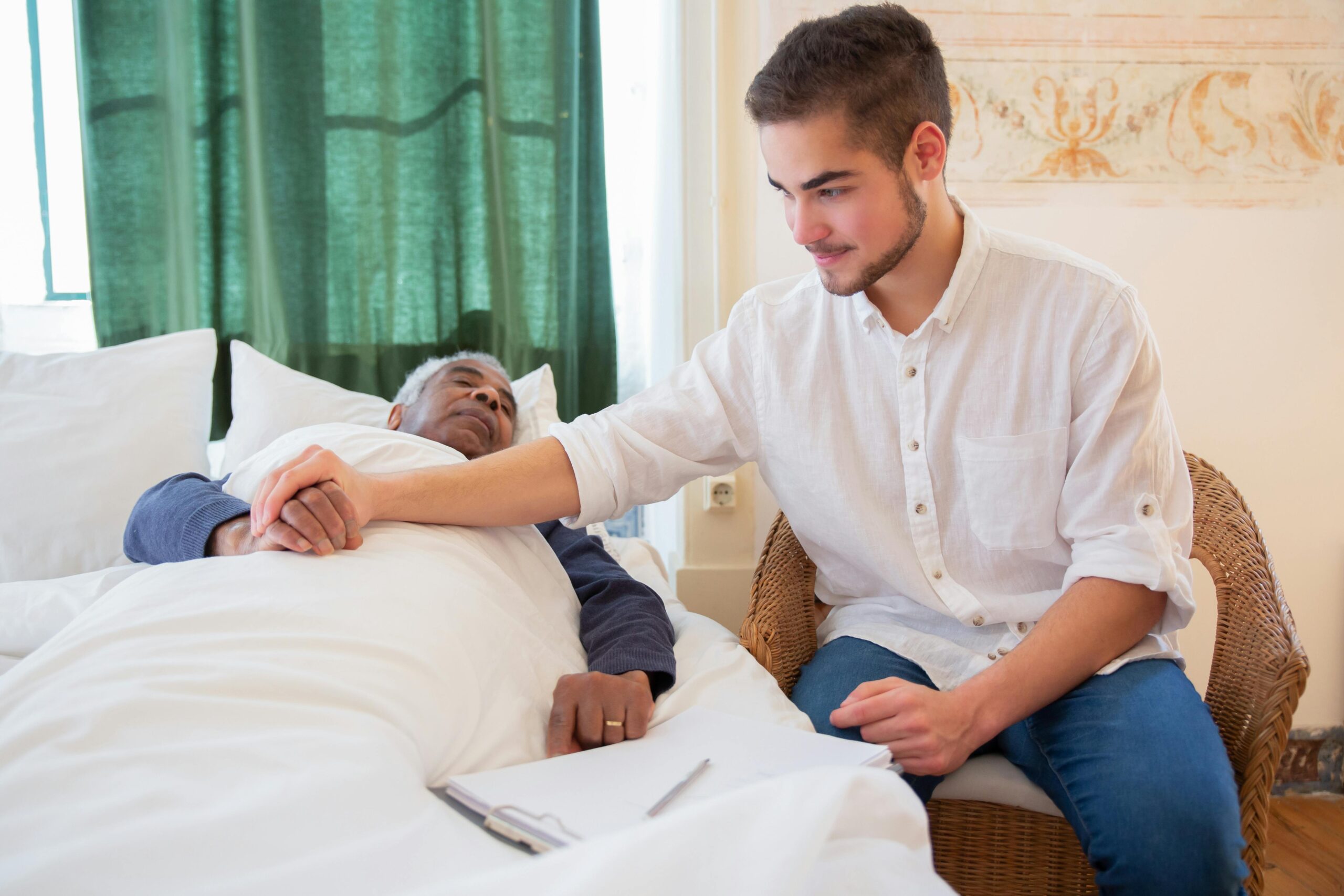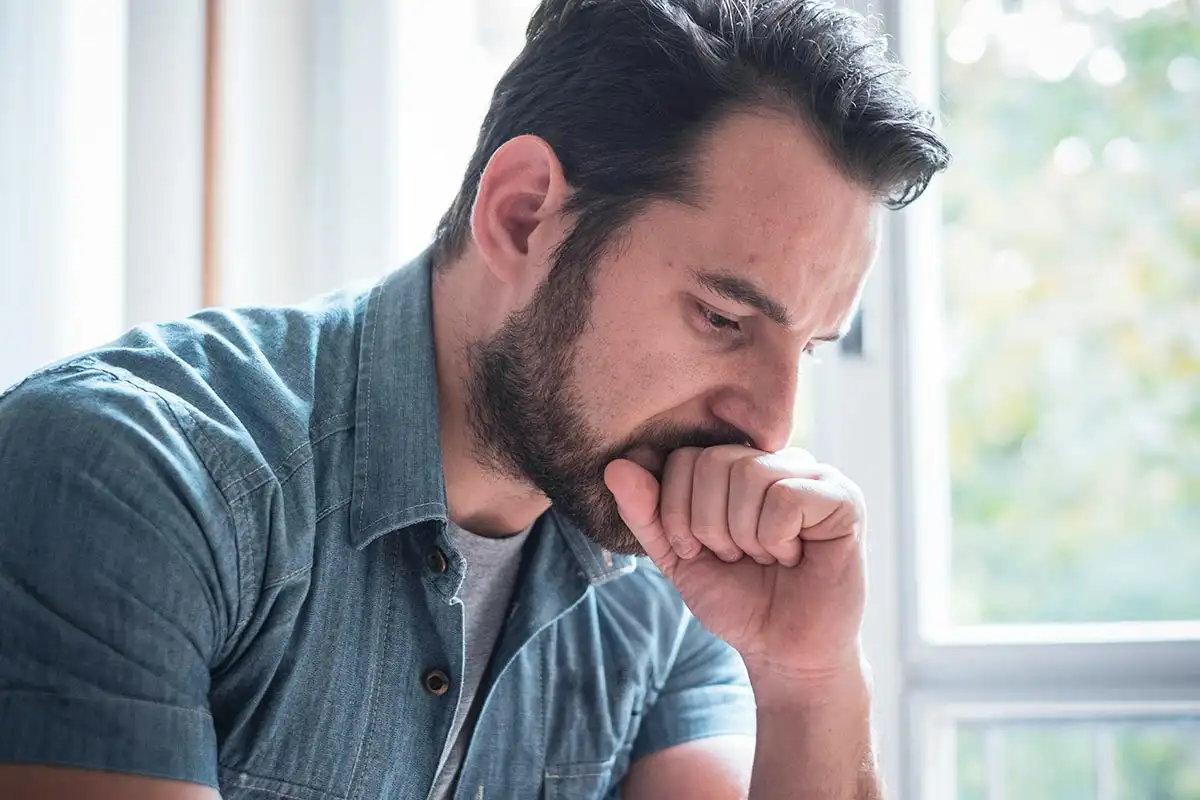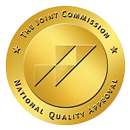
The Future of Addiction Treatment: Virtual Care Beyond the Pandemic
Medically Reviewed by:

Dr. Marco M. Zahedi
Medical Director, Compassion Recovery Center

Dr. Michael Majeski
Licensed Psychologist (LP), Compassion Recovery Center
Table of Contents
Introduction
Addiction is a complex and challenging condition that affects millions of individuals and families worldwide. For generations, the primary model for addiction treatment involved inpatient stays or intensive outpatient programs conducted entirely in person. While effective for many, these traditional approaches presented significant barriers related to accessibility, cost, scheduling, and the need to disrupt daily life. Recovery is a personal journey, and finding the right path to healing has always been a critical step. The world changed dramatically with the arrival of the COVID-19 pandemic. This global health crisis forced an unprecedented shift in how we live, work, and receive care. In the realm of healthcare, particularly behavioral health and addiction treatment, the pandemic acted as a catalyst for rapid innovation. Suddenly, face-to-face meetings became risky, and the need for remote solutions became urgent. This necessity paved the way for the widespread adoption of telehealth and virtual care services, transforming the landscape of addiction treatment almost overnight. Before the pandemic, telehealth was already gaining traction in some areas, but its application in addiction treatment was relatively limited. There were concerns about effectiveness, security, and the ability to build rapport remotely. However, the urgent circumstances of 2020 and beyond demonstrated that virtual care could not only maintain continuity of treatment but, in many cases, enhance it. Patients and providers alike discovered the unexpected benefits of connecting through secure online platforms, leading to a fundamental rethinking of how addiction recovery services could be delivered. This shift wasn’t just a temporary fix; it represented a significant evolution. The pandemic accelerated a trend that was already beginning: leveraging technology to make crucial healthcare services more accessible. For individuals struggling with substance abuse, particularly those in areas like Orange County, California, where busy lives, traffic, and geographical spread can be obstacles, virtual addiction treatment offered a lifeline. It provided a way to engage in vital therapy, counseling, and support without the need for daily commutes or time away from work and family obligations. Today, even as pandemic-related restrictions have eased, virtual care remains a cornerstone of modern addiction treatment. It has moved beyond being a temporary solution to become a permanent, integral part of the recovery ecosystem. The future of addiction treatment is undeniably intertwined with technology, offering flexible, accessible, and effective pathways to healing for those who need it most. This comprehensive approach, blending clinical excellence with technological convenience, is what centers like Compassion Recovery Center are dedicated to providing, bringing expert care directly to you, wherever you are.
The Rise of Virtual Care in Addiction Treatment
The concept of using technology to deliver healthcare, or telehealth, has roots stretching back decades, with early examples including using radio to reach remote populations. In the context of mental health and addiction treatment, the idea of remote counseling or support groups existed long before the internet, often through phone calls or mailed materials. However, widespread, interactive virtual care, as we know it today, is a much more recent development. Before the digital age truly took hold, in-person therapy and group meetings were the only widely available options. Slowly, some pioneers began experimenting with video conferencing in specific cases, but it was far from mainstream. The late 20th and early 21st centuries saw the development of more robust internet infrastructure and personal computing devices. This laid the groundwork for telehealth to become a more viable option. Some providers started offering limited online sessions for individual therapy, but group therapy, intensive programs, and medication management for addiction were still predominantly delivered in person. Regulatory hurdles, insurance reimbursement issues, and ingrained preferences for face-to-face interaction also slowed the adoption of virtual care in this specialized field. Then came the unprecedented challenge of the COVID-19 pandemic in early 2020. The need for social distancing and lockdowns made traditional in-person addiction treatment models difficult, if not impossible, to maintain safely. Treatment centers faced a critical dilemma: how to continue providing essential, life-saving services to vulnerable populations while minimizing health risks? The answer, for many, was a rapid and dramatic pivot to telehealth. Regulatory barriers that had previously hindered telehealth adoption were quickly relaxed or removed. Insurance companies expanded coverage for virtual behavioral health services. Treatment providers rapidly adapted their programs and platforms to function online. This period saw a massive, unplanned, but ultimately successful, experiment in delivering comprehensive addiction care remotely. What might have taken years or even decades to achieve under normal circumstances was accomplished in a matter of months out of necessity. This rapid acceleration revealed something crucial: virtual care works for addiction treatment. Patients who might have dropped out of treatment due to logistical challenges or fear of exposure could continue their recovery journeys from the safety and privacy of their homes. New patients, who might have been hesitant to seek in-person help during a global health crisis, found virtual options accessible and less intimidating. The benefits of this pandemic-driven acceleration became immediately apparent. For individuals, virtual addiction treatment offered convenience like never before. No travel time, no gas costs, no need to take significant time off work or find childcare. Treatment could fit into the rhythm of their daily lives, making it more sustainable. It also provided a level of privacy and anonymity that some found incredibly helpful, reducing the potential stigma associated with walking into a physical treatment center. This increased comfort could make it easier for individuals to open up and engage fully in the therapeutic process. Furthermore, virtual care expanded access to treatment for people in rural areas or those with limited mobility. Even in densely populated areas like Orange County, where traffic is a constant challenge, virtual care eliminated the stress and time commitment of commuting to a facility. It allowed individuals to connect with experienced therapists and counselors regardless of their specific location within the service area. For treatment providers like Compassion Recovery Center, embracing virtual care meant the ability to continue serving their community without interruption. It allowed them to reach a wider population, overcoming geographical limitations. It also demonstrated the resilience and adaptability of the addiction treatment field, proving that effective, compassionate care can be delivered through innovative means. The lessons learned during the pandemic solidified virtual care’s place not just as an alternative, but as a vital, often preferred, option for many seeking help for substance abuse.Key Components of Virtual Addiction Treatment
Virtual addiction treatment is not simply a watered-down version of in-person care; it is a comprehensive suite of services delivered through secure, interactive online platforms. Just like traditional programs, effective virtual treatment addresses the multifaceted nature of addiction, incorporating therapy, education, support, and sometimes medication. The key is adapting proven treatment modalities to the virtual environment while maintaining the same high standards of care and clinical effectiveness. One of the cornerstones of virtual addiction treatment, mirroring traditional models, is the Intensive Outpatient Program (IOP). A standard IOP typically involves multiple therapy sessions per week, offering a structured level of care that allows patients to live at home while receiving treatment. A virtual IOP program takes this model online. Patients participate in group therapy, individual counseling, educational lectures, and workshops through secure video conferencing. This means they can attend sessions from their living room, office, or any private space with an internet connection. This level of flexibility makes it significantly easier for individuals to balance their recovery program with work, school, and family responsibilities. For many in Orange County, the ability to avoid daily commutes to a physical facility is a major factor in sticking with treatment. Virtual IOP provides this critical structure and support without the logistical burden, offering intensive support right where you are. Another crucial component is individual therapy, and Cognitive Behavioral Therapy (CBT) is one of the most widely used and effective approaches for addiction. Online CBT therapy sessions allow patients to work one-on-one with a therapist via video. CBT helps individuals identify and challenge negative thought patterns and behaviors that contribute to substance use. In a virtual setting, patients can practice coping strategies in their own environment, making the skills feel immediately applicable to their daily lives. The privacy of online sessions can also make it easier for some individuals to be more open and vulnerable with their therapist, leading to deeper therapeutic work. Therapists use screen sharing, digital whiteboards, and secure messaging to replicate the interactive nature of in-person sessions. Medication-Assisted Treatment (MAT) is an evidence-based approach that combines behavioral therapy and medications to treat substance use disorders, particularly opioid and alcohol addiction. Delivering MAT treatment online requires careful coordination. While initial assessments and some follow-up appointments for prescribing medications like buprenorphine or naltrexone can be conducted via telehealth, there is often a need for coordination with local resources for drug screening and physical examinations. However, much of the therapeutic and counseling support that accompanies MAT, which is crucial for its success, can be effectively delivered through virtual platforms. This allows individuals to access the combined power of medication and therapy without the need for frequent in-person visits to a clinic, making it more accessible, especially for those in remote areas or with mobility issues. Telehealth facilitates regular check-ins with prescribing physicians and counselors, ensuring ongoing support and monitoring. Addiction doesn’t happen in a vacuum; it significantly impacts relationships, especially with partners and spouses. Virtual couples counseling for addiction recovery allows partners to attend therapy sessions together from separate locations if needed, or from the comfort of their shared home. These sessions help couples address the damage caused by addiction, improve communication, rebuild trust, and develop healthier ways of relating to each other. Virtual platforms can sometimes make it easier for both partners to schedule sessions, as they don’t have to coordinate travel to a physical office. A supportive partner can be a critical asset in long-term recovery, and virtual couples counseling provides a flexible way to strengthen this vital relationship. Beyond these core components, virtual addiction treatment programs often include a range of other services delivered online, such as educational workshops on addiction science, relapse prevention planning, mindfulness and stress reduction techniques, and peer support groups. The goal is to provide a holistic and well-rounded treatment experience that addresses not just the addiction itself, but also the underlying issues, coping skills, and support systems necessary for sustainable recovery. By integrating these key components into a comprehensive virtual program, centers like Compassion Recovery Center offer effective treatment options for individuals seeking help for substance abuse without disrupting their lives unnecessarily. If you’re exploring alcohol rehab programs or drug rehab programs and looking for a flexible option, understanding these virtual components is the first step.
Advantages of Virtual Addiction Treatment
The widespread adoption of virtual care in addiction treatment, particularly accelerated by the pandemic, has highlighted numerous significant advantages for both patients and providers. These benefits extend far beyond mere convenience and contribute directly to improving access, engagement, and outcomes in recovery. One of the most compelling advantages is undoubtedly accessibility and convenience for patients. For someone struggling with addiction, especially in a bustling area like Orange County, traditional in-person treatment can present significant logistical hurdles. Traffic, long commute times, scheduling conflicts with work or childcare, and geographical distance can all make it difficult to attend regular sessions consistently. Virtual treatment eliminates these barriers. Patients can connect to therapy sessions and group meetings from virtually anywhere with a secure internet connection – their home, a quiet spot during a lunch break, or even while traveling. This flexibility makes it significantly easier to integrate treatment into a busy life, reducing stress and increasing the likelihood of consistent attendance, which is crucial for recovery progress. Imagine being able to receive expert care without spending hours each week in traffic; this is the reality virtual care offers. Another profound advantage is the increased privacy and reduced stigma associated with seeking help. Addiction still carries a heavy stigma in society, which can be a major deterrent for individuals considering treatment. Walking into a physical treatment center can feel intimidating or expose someone to the fear of being recognized. Virtual addiction treatment allows individuals to receive care from the privacy of their own home or a location of their choosing. There’s no need to explain where you’re going, no waiting rooms filled with unfamiliar faces, and no public display of seeking help. This increased level of discretion can make it much easier for someone to take that crucial first step towards recovery, especially for those who are highly concerned about privacy or professional repercussions. Feeling safe and unseen can empower individuals to be more open and honest during therapy sessions, leading to more effective treatment. Cost-effectiveness and resource optimization are also key benefits. From the patient’s perspective, virtual treatment often reduces associated costs. There are no travel expenses (gas, public transport, parking), and less need to take unpaid time off work. While the treatment program fees are comparable to in-person IOPs, the overall financial burden on the patient can be lower due to reduced ancillary costs. For providers, delivering care virtually can also lead to resource optimization. While technology investments are necessary, there can be savings on physical space, utilities, and administrative overhead associated with managing a large physical facility. These potential savings can sometimes be passed on to patients or allow centers to invest more in clinical staff and program quality. Furthermore, virtual care allows providers to serve more patients without being limited by the physical capacity of their building. Beyond these practical advantages, virtual care can sometimes provide a more comfortable and familiar environment for therapy. Being in one’s own home can feel safer and more conducive to opening up than a clinical setting. It also allows therapists to get a glimpse (with patient permission, of course) into a patient’s living environment, potentially offering additional insights into their daily life and challenges. For families, virtual care can also be beneficial. Services like virtual couples counseling for addiction recovery or family therapy can be accessed more easily, allowing loved ones to participate in the recovery process without the logistical strain. This involvement is critical for building a strong support system, which is a major predictor of long-term sobriety. In summary, the advantages of virtual addiction treatment – enhanced accessibility, unparalleled convenience, increased privacy, reduced stigma, and potential cost savings – make it a highly attractive and effective option for many individuals seeking help. Centers like Compassion Recovery Center in Orange County harness these benefits to deliver high-quality, compassionate care that fits into the realities of modern life, helping more people access the recovery they deserve. If you’re considering drug rehab programs or alcohol rehab programs, it’s worth exploring the flexibility and benefits of a virtual model. Verify your insurance online today to see how virtual care can work for you.Challenges and Limitations
While virtual addiction treatment offers significant advantages and has proven remarkably effective for many, it’s essential to acknowledge and address its potential challenges and limitations. Understanding these allows both patients and providers to navigate the process successfully and ensure that virtual care is the right fit for an individual’s specific needs. One of the most significant challenges is the potential for technological barriers and the digital divide. Access to reliable internet service, a suitable device (smartphone, tablet, or computer), and basic digital literacy is fundamental for participating in virtual treatment. While technology is widespread, not everyone has equal access or comfort level with online platforms. This can disproportionately affect individuals in low-income areas, rural communities (though less of an issue in Orange County itself, but relevant for broad telehealth), or older adults who may be less familiar with technology. Compassion Recovery Center understands this and can often work with individuals to identify potential solutions or resources if technology is a major barrier. Sometimes, simple guidance on setting up a secure connection or using the platform can make a big difference. Another challenge is maintaining patient engagement and accountability in a remote setting. In a physical center, the structure, routine, and direct supervision can sometimes help keep patients on track. In a virtual environment, patients are in their own homes, potentially surrounded by distractions or triggers. It requires a higher degree of self-motivation and discipline to log in for sessions, complete assignments, and actively participate. Providers need to employ strategies to keep patients engaged, such as using interactive tools, fostering a strong sense of community within virtual groups, and maintaining regular, proactive communication. Building a strong therapeutic alliance between the patient and therapist is crucial, as this relationship often serves as a primary motivator for continued engagement. Addressing the need for in-person interventions or services that cannot be fully replicated online is another limitation. For instance, while outpatient detox can be managed with telehealth check-ins, it often requires initial medical assessments and potentially monitoring that necessitates some level of physical interaction or coordination with local medical providers. Similarly, individuals with severe, unstable co-occurring medical or psychiatric conditions might require the higher level of care and immediate medical access provided by an inpatient or partial hospitalization setting (Partial Hospitalization Program – PHP). Virtual care is generally best suited for individuals who are medically stable and have a supportive home environment. Assessing whether a patient is clinically appropriate for a remote program is a critical step in the admissions process. Furthermore, while virtual care offers privacy, it also requires patients to have a private, safe space where they can participate in sessions without interruption or the presence of individuals who might undermine their recovery efforts. For some individuals living in chaotic or unsupportive home environments, finding such a space can be difficult, potentially compromising their ability to fully engage or speak freely. Group therapy dynamics can also be subtly different online. While virtual platforms have become adept at facilitating group interactions, some individuals might find it harder to read non-verbal cues or feel the same sense of connection as in a physical room. Facilitators of virtual groups need specific skills to ensure all participants feel heard, supported, and connected. Despite these challenges, it’s important to frame them not as insurmountable obstacles, but as factors to consider during the assessment and treatment planning process. A reputable virtual treatment provider will conduct a thorough evaluation to determine if a virtual program is clinically appropriate for an individual’s specific situation, including their technological access, home environment, and clinical needs. They will also have strategies in place to mitigate challenges, such as providing technical support, employing engaging therapeutic techniques, and having clear protocols for when in-person support or a higher level of care might be necessary. The goal is to match the individual with the treatment setting where they are most likely to succeed. Compassion Recovery Center prioritizes a thorough assessment to ensure virtual care is the right fit, always putting the patient’s safety and recovery needs first.The Role of Technology in Enhancing Virtual Care
Technology is not just the medium through which virtual addiction treatment is delivered; it is also a powerful tool that can enhance the quality, effectiveness, and reach of care. The continuous evolution of digital tools and platforms is opening up new possibilities for supporting individuals in their recovery journeys. At the core of virtual care are the telehealth platforms and tools used for communication and program delivery. These are far more sophisticated than simple video chat. Modern platforms designed for healthcare are built with stringent security and privacy standards (like HIPAA compliance in the United States) to protect sensitive patient information. They often include features such as secure video conferencing for individual and group sessions, secure messaging for communication between patients and providers, digital whiteboards for interactive lessons, screen sharing for reviewing documents or exercises, and tools for scheduling and managing appointments. Some platforms also integrate features for tracking patient progress, administering assessments, and delivering educational content in various formats (videos, readings, interactive modules). The reliability and user-friendliness of these platforms are crucial for ensuring a smooth and effective treatment experience for both patients and clinicians. Compassion Recovery Center utilizes state-of-the-art, secure platforms to deliver its virtual IOP program and other online services, ensuring patient privacy and a seamless experience. Data security and patient confidentiality are paramount in healthcare, and this is especially true for sensitive information related to addiction and mental health. Reputable virtual care providers invest heavily in robust security measures to protect patient data. This includes end-to-end encryption for communications, secure storage of electronic health records, strict access controls, and regular security audits. Patients engaging in remote drug rehab Orange County need to feel absolutely confident that their personal and medical information is protected. Technology plays a critical role in building and maintaining this trust by providing the infrastructure for secure interactions and data management, allowing patients to focus on their recovery without worrying about privacy breaches. Looking ahead, innovations in technology are poised to further enhance virtual addiction treatment. Virtual Reality (VR) is one exciting area with potential applications. VR can be used to create immersive simulations for practicing coping skills in challenging situations (e.g., being offered drugs in a social setting) or for exposure therapy in a safe, controlled environment. It can also be used to deliver engaging, interactive educational content about addiction and recovery. While still emerging in widespread addiction treatment, VR offers a novel way to deliver experiential therapy remotely. Artificial Intelligence (AI) is another area with potential, although its application in direct patient care is still evolving and requires careful ethical consideration. AI could potentially be used for tasks such as analyzing large datasets to identify patterns that predict relapse risk, personalizing treatment plans based on individual patient characteristics, or providing chatbot support for answering common questions or offering motivational support between sessions. AI tools are also being developed to help clinicians with administrative tasks, allowing them more time to focus on patient care. Beyond VR and AI, other technologies like wearable devices could potentially be integrated into virtual care to monitor physiological signs related to stress or cravings, providing real-time data that could inform treatment interventions. Mobile apps can also be used to supplement virtual therapy, offering tools for mood tracking, journaling, accessing recovery resources, and connecting with peer support networks. The effective integration of these technologies requires clinicians to be trained in using them effectively and ethically. Technology should always serve as a tool to enhance the human element of care, not replace it. For centers like Compassion Recovery Center, embracing technology means continually seeking ways to use it to improve patient outcomes, increase access, and deliver the most effective, compassionate care possible in a virtual format. The future will likely see an even richer array of technological tools used to support recovery, making help more accessible and personalized than ever before. Exploring options like Virtual IOP Program means engaging with a system that leverages technology for your benefit.Future Trends in Virtual Addiction Treatment
The rapid evolution of virtual care in addiction treatment over the past few years is just the beginning. The future promises even more sophisticated, integrated, and accessible models of care, building on the foundation established during the pandemic. Understanding these trends provides insight into how addiction treatment will continue to adapt to meet the diverse needs of individuals seeking recovery. One major trend is the increasing integration of virtual care with traditional, in-person methods. The initial forced separation due to the pandemic is giving way to a more blended or hybrid approach. For many, a purely virtual program works well from start to finish. However, for others, a treatment journey might involve starting with outpatient detox with local medical support, transitioning to a virtual IOP program for intensive therapy, and then potentially attending some local in-person support groups or step-down programs for ongoing community connection. This hybrid model offers the flexibility of virtual care combined with the benefits of face-to-face interaction when needed, allowing for more personalized treatment plans. Treatment centers are developing referral networks and integrated systems to facilitate seamless transitions between different levels and types of care. Policy changes and regulatory considerations will continue to shape the future of virtual addiction treatment. The temporary waivers and expansions of telehealth coverage enacted during the pandemic demonstrated the feasibility and effectiveness of virtual care. Now, the focus is on making these changes permanent. This involves advocating for continued insurance parity, ensuring providers can be reimbursed for virtual services at the same rates as in-person care, and establishing clear licensing standards that allow providers to offer services across state lines (though licensing regulations remain a complex area). Ongoing research into the effectiveness and safety of virtual care models will inform future policies. For providers like Compassion Recovery Center operating in California and specifically serving areas like Orange County, understanding and adapting to these evolving policies is crucial to ensuring continuity of care and maximum accessibility for patients. The role of virtual care in comprehensive addiction recovery extends beyond initial intensive treatment. It is increasingly being used for relapse prevention, aftercare, and ongoing support. Virtual check-ins with therapists, online support groups (like virtual AA or NA meetings), and recovery coaching delivered via telehealth can provide crucial long-term support, which is essential for maintaining sobriety. Virtual platforms make it easier for individuals to stay connected to their recovery network, regardless of geographical changes or busy schedules. This is particularly valuable for individuals who have completed an intensive program but still benefit from regular touchpoints and support. Furthermore, virtual care is facilitating earlier intervention. The ease of accessing online assessments and initial consultations removes barriers for individuals who might be hesitant to seek help in person. This can lead to people getting help sooner in the progression of their addiction, potentially preventing more severe consequences. The future of virtual addiction treatment is also likely to see increased personalization. Leveraging technology and data, programs can potentially tailor content, therapy approaches, and support structures more precisely to the individual’s specific needs, preferences, and progress. AI and data analytics could play a role in identifying which interventions are most effective for whom. Finally, there will be a continued focus on addressing the challenges identified earlier, such as the digital divide and ensuring equitable access. Initiatives to provide technology resources, digital literacy training, and support for finding private spaces for sessions will be critical to ensuring virtual care is accessible to all who could benefit. In essence, the future of virtual addiction treatment is one of integration, accessibility, and personalization. It’s about building a recovery ecosystem where technology serves as a powerful tool to connect individuals with the compassionate, effective care they need, making recovery more attainable for a wider range of people. Compassion Recovery Center is at the forefront of this evolution, continuously refining its Virtual IOP Program and other services to incorporate the latest advancements and ensure the highest quality of remote drug rehab Orange County has to offer. If you’re ready to explore these future-forward options, don’t hesitate to reach out today.Compassion Recovery Center’s Approach
At Compassion Recovery Center, we have fully embraced the potential of virtual care to provide accessible, effective, and compassionate addiction treatment. Our model is built on the understanding that recovery is deeply personal and often requires flexible solutions that integrate with an individual’s life, not disrupt it entirely. Specializing in serving the Orange County community and beyond through telehealth, we bring expert care directly to you. Our core offering is our Virtual IOP Program. This program is designed to provide the intensive support needed for early recovery, delivered entirely through a secure, user-friendly online platform. Participants engage in multiple therapy sessions per week, including group therapy, individual counseling, and educational workshops, mirroring the structure and content of a traditional Intensive Outpatient Program (IOP). The virtual format means you can attend these vital sessions from the privacy and comfort of your home, eliminating commute times and making it easier to balance treatment with work, family, and other responsibilities. Our virtual IOP is a leading option for alcohol rehab programs and drug rehab programs for those seeking flexible care in California. Within our virtual programs, we utilize evidence-based therapies like Online CBT therapy. Cognitive Behavioral Therapy is incredibly effective in helping individuals identify triggers, challenge negative thoughts, and develop healthy coping mechanisms. Delivering CBT online allows for focused, one-on-one sessions where you work closely with a licensed therapist to build the skills necessary for long-term sobriety. Our therapists are experienced in facilitating engaging and impactful therapy sessions in the virtual environment, ensuring you receive the same quality of care as in person. We also understand that for some individuals, Medication-Assisted Treatment (MAT) is a critical part of their recovery journey, particularly for opioid and alcohol dependence. We facilitate access to MAT treatment online by coordinating with medical providers who can conduct evaluations and manage prescriptions via telehealth, in conjunction with necessary local medical services like lab work. Crucially, we provide the essential behavioral therapy and counseling components of MAT through our virtual platform, ensuring you receive comprehensive support that combines medication with therapeutic intervention. This integrated approach addresses both the physical and psychological aspects of addiction. Furthermore, recognizing that addiction impacts relationships, our virtual services often include options for family involvement and virtual couples counseling for addiction recovery. Healing damaged relationships and building a strong support system is vital for sustained recovery, and our virtual format makes it easier for loved ones to participate in therapy sessions together, regardless of their location. Choosing Compassion Recovery Center for remote drug rehab Orange County offers specific benefits. We understand the unique dynamics of the Orange County community and provide care tailored to the needs of individuals in this area. Our virtual model bypasses the notorious Orange County traffic and busy schedules, making high-quality treatment accessible from Anaheim to Irvine, from Huntington Beach to Fullerton. We bring expert, compassionate care right to your doorstep, or rather, your screen. Our focus is on providing a safe, non-judgmental space where you can heal and grow, supported by a team of experienced clinicians who are dedicated to your success. We believe in a personalized approach to care. When you connect with us, we conduct a thorough assessment to understand your specific history, challenges, and goals. This allows us to tailor our virtual program to meet your individual needs, ensuring you receive the most effective treatment plan possible. We also address co-occurring mental health conditions (Mental Health Treatment), as addiction and mental health often go hand-in-hand (Dual Diagnosis Treatment). Our virtual programs are equipped to provide integrated care for these complex needs. While we cannot share specific patient success stories publicly for privacy reasons, our approach has helped numerous individuals find freedom from addiction and build fulfilling lives in recovery. The flexibility and accessibility of our virtual rehab California model have been key factors in helping people stay engaged in treatment and achieve their recovery goals. If you are struggling with substance abuse or know someone who is, exploring virtual treatment is a step worth taking. Compassion Recovery Center is here to guide you. We make the process of starting treatment as straightforward as possible. You can easily check insurance coverage right on our website. Our admissions team is available for a confidential conversation to discuss your situation, answer your questions, and help you determine if our Virtual IOP Program or other services are the right fit for you. Don’t let the challenges of traditional treatment models hold you back. Contact us for a confidential assessment today and take the first step towards a healthier, happier future. Your recovery journey can start now, right from where you are.Conclusion
The landscape of addiction treatment has been profoundly transformed by the advent and rapid acceleration of virtual care. What began as a necessary adaptation during a global crisis has evolved into a permanent, effective, and highly accessible pathway to recovery. Virtual addiction treatment, including programs like virtual IOP, online CBT therapy, and the therapeutic components of MAT treatment online, offers unprecedented flexibility, privacy, and convenience, removing many traditional barriers to seeking and staying in treatment. We’ve explored the historical context, the pivotal role of the pandemic in driving adoption, and the core components that make virtual care a comprehensive treatment option. We’ve highlighted the undeniable advantages, such as enhanced accessibility, reduced stigma, and potential cost savings, which make recovery more attainable for individuals with busy lives or those in areas like Orange County facing logistical challenges. While acknowledging the limitations and challenges, such as technological barriers and the need for appropriate clinical fit, we’ve seen how these can be addressed through careful assessment and the strategic use of technology. Looking ahead, the future of addiction treatment is clearly a blend of human expertise and technological innovation. Virtual care will continue to integrate with traditional methods, policies will evolve to support wider access, and new technologies will emerge to enhance the treatment experience and improve outcomes. The potential for virtual care to provide ongoing support, facilitate earlier intervention, and offer truly personalized treatment plans is immense. Embracing virtual care means recognizing that effective treatment doesn’t always require being physically present in a facility. It means leveraging technology to connect individuals with the compassionate, evidence-based care they need, wherever they are. For those in California, particularly in the Orange County area, seeking remote drug rehab Orange County or alcohol rehab programs, virtual options like those offered by Compassion Recovery Center provide a viable, effective path forward. At Compassion Recovery Center, we are dedicated to providing high-quality, flexible, and empathetic virtual rehab California services. Our team understands the complexities of addiction and is committed to supporting you every step of the way. If you or a loved one is struggling with substance abuse, please know that help is available, and it can be accessed from the comfort and privacy of your own home. Taking the first step towards recovery can feel daunting, but you don’t have to do it alone. We are here to answer your questions, address your concerns, and help you understand how virtual treatment can work for your specific situation. Don’t let fear, stigma, or logistical hurdles prevent you from seeking the help you deserve. Explore treatment options that fit your life. We encourage you to learn more about our services, understand the benefits of our virtual approach, and see how we can support your recovery journey. You can easily check your eligibility and financial options by visiting our admissions page to verify your insurance online. For a more personal conversation about your needs and to see if our virtual programs are the right fit, please contact us for a confidential assessment. Our compassionate team is ready to help you get help now and start building a brighter, healthier future. The future of addiction treatment is here, and it’s accessible to you. Start your recovery journey today.What are the benefits of virtual addiction treatment post-pandemic?
Post-pandemic, the benefits of virtual addiction treatment include continued accessibility and convenience (no travel), increased privacy and reduced stigma, potential cost-effectiveness, and the ability to balance treatment with daily life (work, family). It brings expert care directly to your home.
How effective is telehealth for addiction recovery?
Numerous studies and real-world experiences, particularly accelerated by the pandemic, have shown that telehealth for addiction recovery is highly effective for many individuals, comparable to in-person treatment for those who are clinically appropriate for a virtual setting. Success depends on program quality, patient engagement, and individual needs.
What challenges do patients face with virtual addiction treatment?
Potential challenges include technological barriers (internet access, device availability, digital literacy), maintaining engagement and accountability in a remote setting, finding a private and safe space for sessions, and the inability to provide in-person medical or crisis interventions when needed. Reputable providers screen for these issues and offer support.
How does virtual care compare to in-person addiction treatment?
Virtual care utilizes the same evidence-based therapies (like CBT) and provides similar program structures (like IOP) as in-person treatment. The main difference is the delivery method. Virtual care offers greater flexibility and accessibility, while in-person care provides direct physical interaction and immediate on-site medical support, which may be necessary for more severe cases or during detox. The best fit depends on individual circumstances.
What technologies are used in virtual addiction treatment programs?
Virtual addiction treatment primarily uses secure telehealth platforms for video conferencing (individual and group therapy), secure messaging, digital tools for exercises and education, and electronic health records. Future trends may include integration of VR for experiential therapy, AI for personalized support, and mobile apps for supplemental resources and tracking.
Struggling to balance life while needing support? Get expert virtual care and start your recovery journey, anytime, anywhere.
We’re learning more each day.
Researchers and doctors are making exciting progress in understanding mental health and addiction—bringing hope to millions.
Your genes don’t define you.
Genetics can play a part, but they don’t decide your future. Mental health is shaped by many factors, and healing is always possible.
There's no one-size-fits-all.
The right treatment often includes a mix of therapy, medication, and compassionate care—tailored just for you.


















